LAS PERLAS
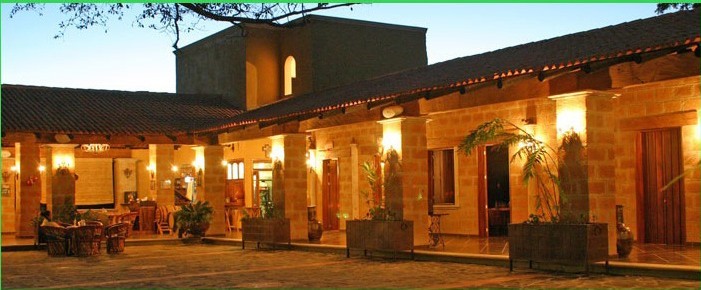
Raicilla Las Perlas comes from Nikhil Bahadur and 5th-generation raicillero Santiago Diaz Ramos, whom Nikhil encountered while doing business in tequila.
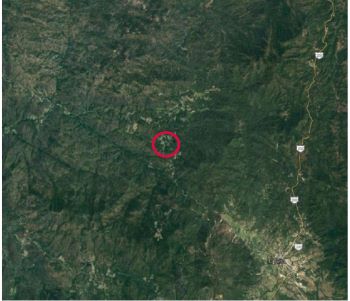
The taberna is near the Diaz Ramos hacienda in the small pueblo of Las Guásimos (pop. 42), located inland from the Pacific coast, south of Puerto Vallarta, on the rugged Cabo Corrientes peninsula.
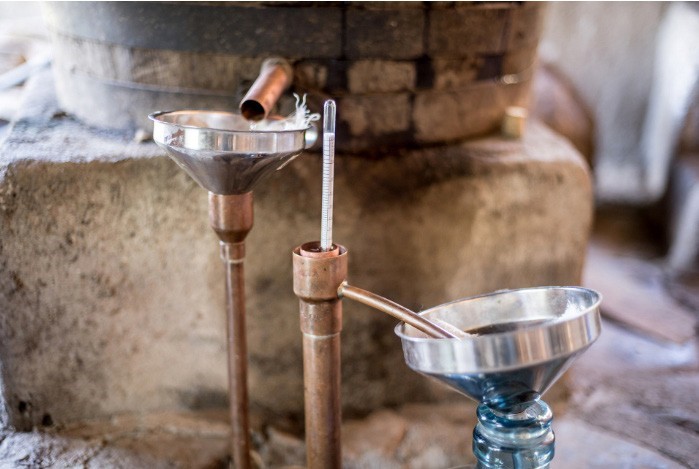
Las Perlas is the most technically serious agave spirit we’ve encountered. This includes the best of ancestral methods (crushing by hand with canoa and mazo), but it also includes injecting some water into the pit-oven for the complexity of using steam, a very long fermentation (3-4 weeks), and the use of a thermometer to constantly monitor the temperature of the distillate coming from the condensation tank.
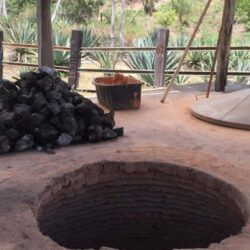
Las Perlas firepit oven. The lid is in the right background.
Wild and semi-wild agaves are cut-up by machete and axe, and roasted/baked in a cylindrical masonry wood-fired pit- oven. When the agaves are added, the oven, the oven is covered with a metal cap, then sealed with a layer of clay. On the second day of roasting, water is added to produce steam within the oven. Milling is done both by hand with mallets (mazos) in a canoa (pileta) and with a shredder. Fermentation with wild yeasts takes place in a large rectangular vat and is deliberately very slow (thus very complete): some 3-4 weeks. First distillation is in a 400-liter stainless- steel still; the second distillation is in a tiny 80-liter Filipino still, whose bottom chamber is a copper pot embedded in clay, and whose upper chamber is the hollowed trunk of a white fig tree.
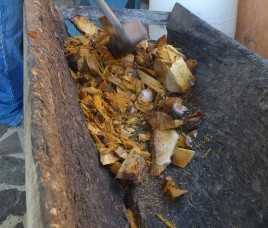
Crushing by mazo in a pileta
Milling is done both by hand with mallets (mazos) in a canoa (pileta) and with a shredder.
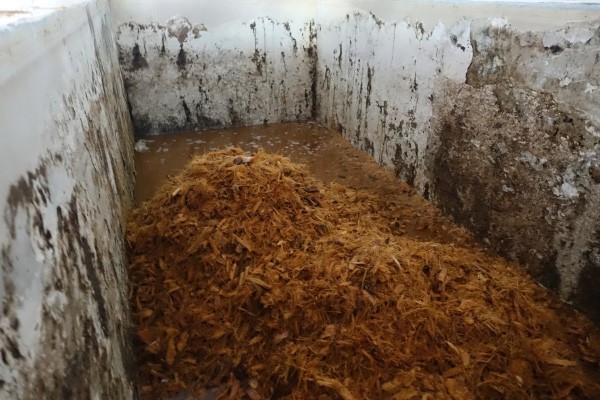
The fermentation is deliberately slow
Fermentation with wild yeasts takes place in a large rectangular vat and is deliberately very slow (thus very complete): some 3-4 weeks.
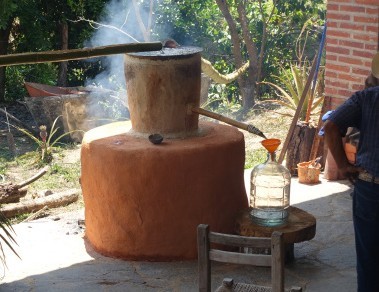
First distillation is in a 400-liter stainless-steel still; the second distillation is in a tiny 80-liter Filipino still, whose bottom chamber is a copper pot embedded in clay, and whose upper chamber is the hollowed trunk of a white fig tree.
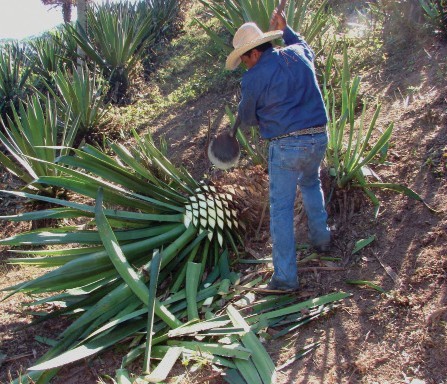
Raicilla Las Perlas is distilled from two wild agave species: angustifolia and rhodacantha, which grow well in the coastal hills of Jalisco. The varieties found in Jalisco are very different from the familiar ones used for mezcal near Oaxaca. The Jalisco varieties both produce large piñas.
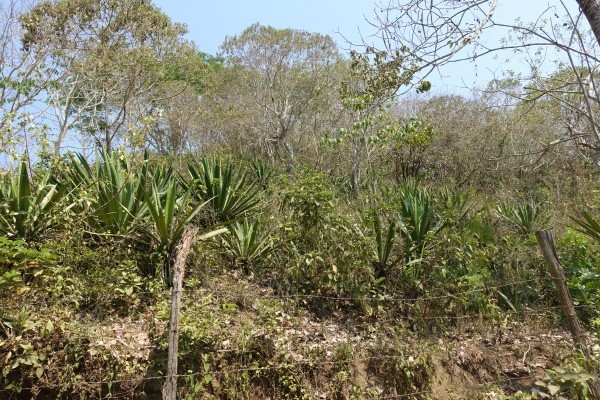
The specific variety of wild angustifolia (a species cultivated in Oaxaca as espadín) distilled for Las Perlas is locally called verde; it can also be grown semi-wild by transplanting bulbils (bulbos or hijuelos) taken from the base of wild agaves. The wild rhodacantha amarillo of the Jalisco coast is also a different variety from the one called dobadaan in Oaxaca. It is related to and interbreeds with angustifolia.